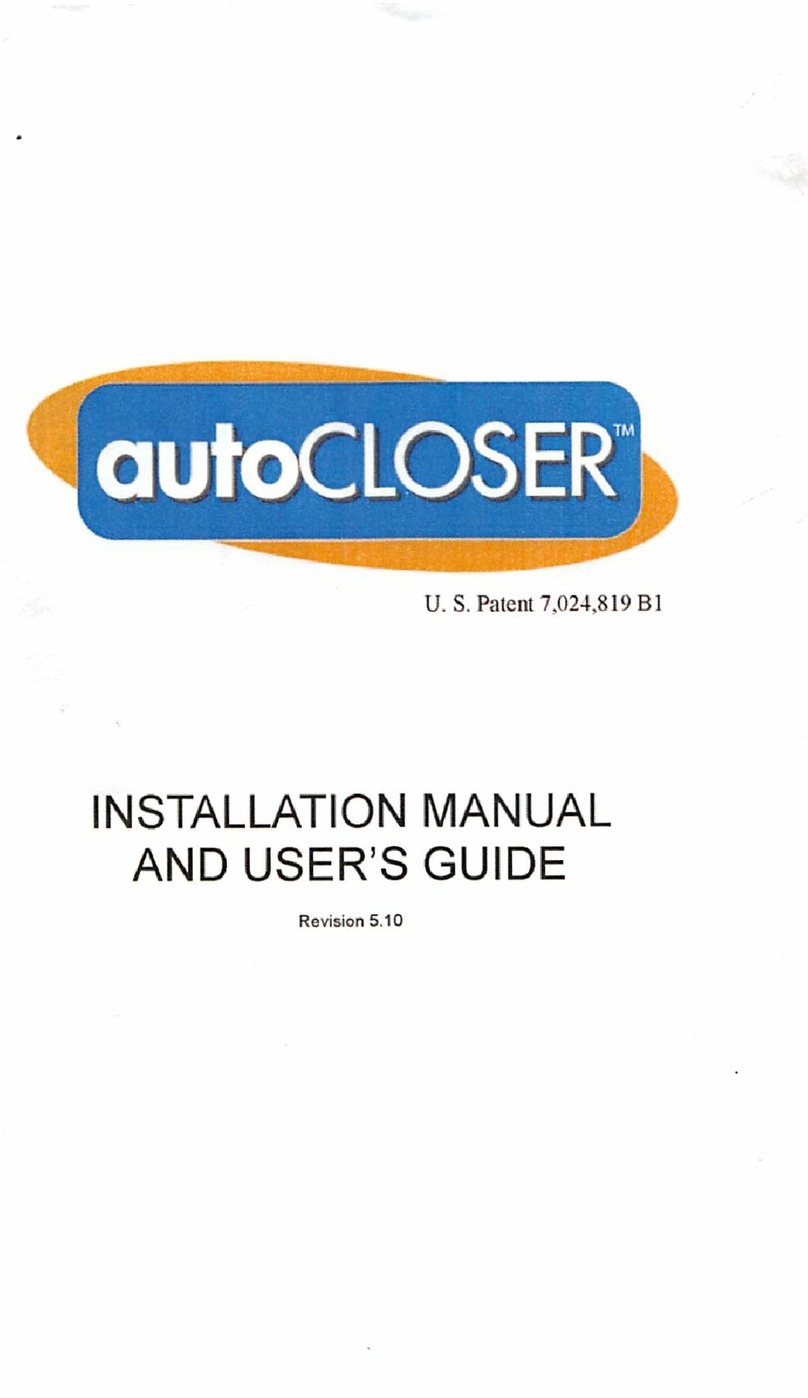
3
INTRODUCTION
Congratulations on your purchase of an Autocloser automatic garage door closer.
We are certain that this little black box will give you peace of mind knowing that your
garage or shop door will close if you inadvertently leave it open. The Autocloser
works with your existing garage door opener and incorporates the latest micro-
controller technology, infrared light sensor, the optional I-Opener system, and
advanced software algorithms to deliver a safe and reliable product.
The Autocloser functions by continuously monitoring the garage door position.
When the device senses that the garage door is open, the device starts a software
timer. When the timer completes it’s count, the Autocloser warns of the impending
garage door closure then shuts the garage door. The operation of the garage door is
achieved by connecting the device to the garage door opener wall button terminals.
This enables the device to simulate the depression of the garage door opener wall
button. The closing sequence can be cancelled by pressing the disable button
(before the audible warning is given), or by pressing the disable button twice if the
audible warning is sounding.
An optional subsystem, the I-Opener system, allows the Autocloser to open and
close a garage door from a remote, secure terminal utilizing an electronic key. Each
electronic key has a unique code that is permanently stored in the key. Each key
provides one of 281,474,976,710,656 possible access combinations. That’s 281
trillion possible numbers. If a thief wanted to circumvent the system by inputting
every possible number, it would take 8,925,513 years because the I-Opener system
reads only one key code per second. The I-Opener system is highly secure, easy to
install and easy to operate.
PRE-INSTALLATION CHECK LIST
1. Verify that your garage door opener complies with the latest govern-
ment safety requirements. The Consumer Products Safety Commission
(http://www.cpsc.gov) has information on the latest garage door opener
requirements mandated by Congress. Garage door openers installed after
1991 are required to have a properly working reversing mechanism. If this
feature does not work on your system, your door could close on an object
such as a child or car and cause severe injury or damage. Garage door
openers installed after 1993 are required to have a photo eye mechanism.
Unlike the reversing mechanism attached to the door, nothing has to
physically touch the door before it reverses. Once the invisible beam from
the photo eye is broken, the door reverses automatically. If your garage
door does not have these government required safety features, replace or
update your garage door opener with a compliant model before installing
the Autocloser. The Autocloser has both an audible beeper and visible
door movement alarm to indicate that the door is about to close. While




























